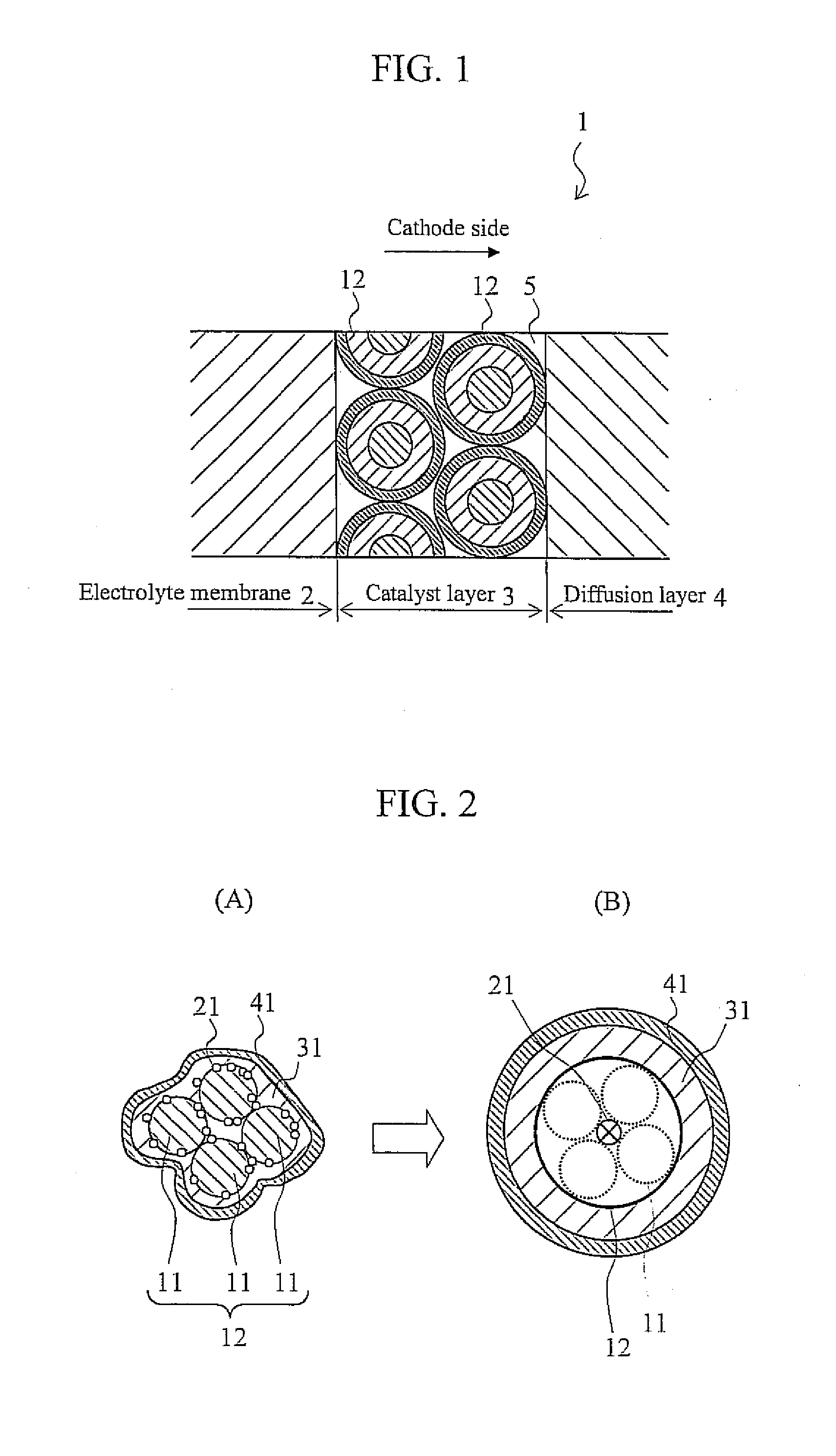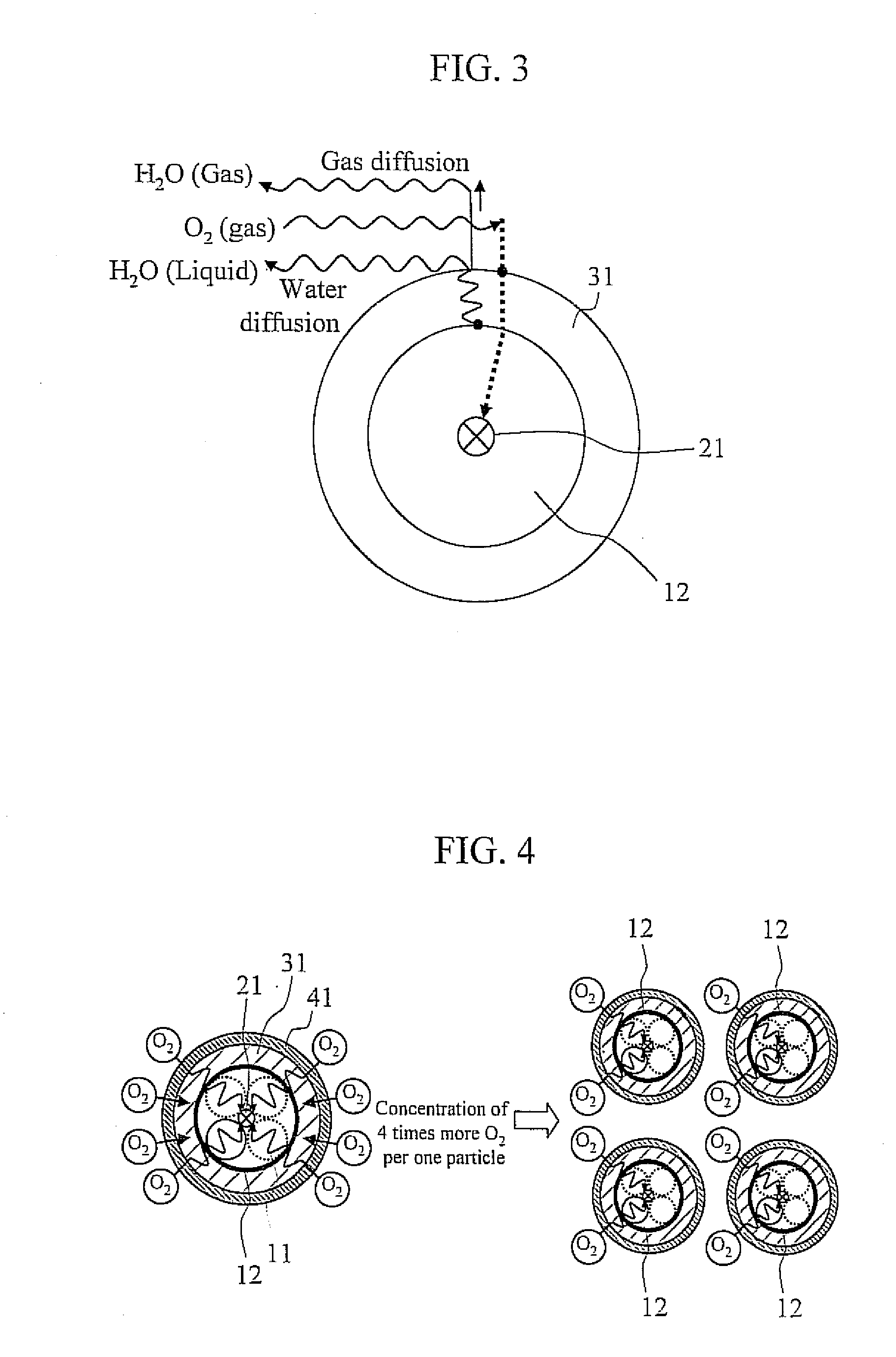Catalytic layer structure for fuel cell
a fuel cell and catalytic layer technology, applied in the direction of fuel cells, active material electrodes, cell components, etc., can solve the problems of sharp voltage drop, insufficient oxygen, and insufficient oxygen, and achieve high current density, short diffusion distance, and easy preparation
- Summary
- Abstract
- Description
- Claims
- Application Information
AI Technical Summary
Benefits of technology
Problems solved by technology
Method used
Image
Examples
examples
[0065]Next, examples of the present invention will be described below. In the present examples, (1) particle size, (2) particle quantity of catalyst particles, (3) coating thickness of ionomer and (4) carried density of catalyst were respectively measured in the following respective methods.
[0066](1) Measurement of Particle Size[0067]The secondary particle size is measured by directly observing the state (carbon particle+Pt+ionomer) of the catalyst layer that has been prepared by making a carbon particle which is an electroconductive carrier carry platinum (Pt) thereon which is a catalyst particle and by wrapping the periphery with the ionomer, or by indirect calculation.
[0068]There are directly observing methods of (a) confirming the state with a three-dimensional TEM (transmission electron microscope), (b) cutting the cross section and observing the cut surface, and (c) observing the surface which has been dyed by a chemical, with an SEM (scanning electron microscope). The indirec...
PUM
| Property | Measurement | Unit |
|---|---|---|
| secondary particle size | aaaaa | aaaaa |
| thickness | aaaaa | aaaaa |
| size | aaaaa | aaaaa |
Abstract
Description
Claims
Application Information
 Login to View More
Login to View More - R&D
- Intellectual Property
- Life Sciences
- Materials
- Tech Scout
- Unparalleled Data Quality
- Higher Quality Content
- 60% Fewer Hallucinations
Browse by: Latest US Patents, China's latest patents, Technical Efficacy Thesaurus, Application Domain, Technology Topic, Popular Technical Reports.
© 2025 PatSnap. All rights reserved.Legal|Privacy policy|Modern Slavery Act Transparency Statement|Sitemap|About US| Contact US: help@patsnap.com



